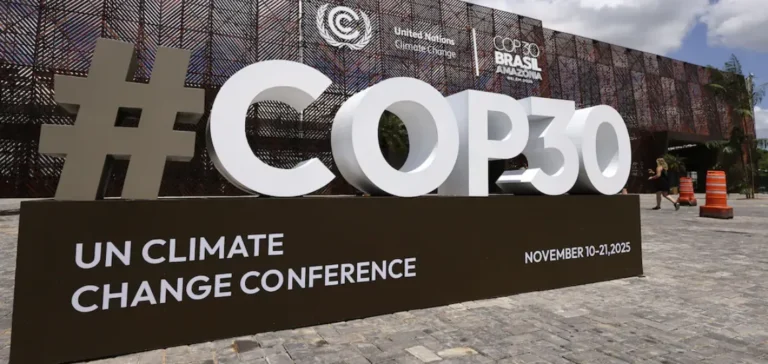India, the world’s third-largest emitter of greenhouse gases, is pursuing its climate goals amid increasingly restrictive international regulation. With 4.4 billion tonnes of CO2 equivalent emitted in 2024, the country ranks behind China and the United States. However, its per capita emissions remain lower than those of major industrialised powers.
The Indian government aims to reach carbon neutrality by 2070 and has pledged to reduce emissions intensity by 45% by 2030 compared to 2005 levels. These commitments were formalised under the Paris Agreement and are accompanied by new regulatory requirements to be presented at COP30, including a detailed roadmap through 2035.
Stronger regulatory commitments on energy
New Delhi announced that 50% of its installed electricity generation capacity now comes from renewable sources, ahead of the Paris Agreement timeline. However, data show that around 75% of the electricity consumed in the country is still generated by coal-fired power plants. The gap between installed capacity and actual production raises regulatory issues concerning the consistency of declared trajectories with measured outcomes.
According to the Centre for Science and Environment (CSE), India’s electricity demand could double by 2047. Maintaining a stable supply requires securing investments in coal while tightening regulatory obligations on renewable energy. The adoption rate of electric vehicles remains low, accounting for just 2.5% of total vehicle sales in 2024, according to S&P Global.
Multilateral pressure for a credible roadmap
Under the Paris Agreement, India must submit a new climate roadmap detailing its 2035 targets. International regulators expect clear signals on emission trajectories and the implementation of monitoring mechanisms. The think tank Sustainable Futures Collaborative estimates that New Delhi could aim for an emissions peak between 2040 and 2045, while also announcing a further emissions intensity reduction of over 50%.
The development of this roadmap comes as India considers publishing two scenarios, one of which would depend on international financial support. This approach aims to adjust its obligations based on available resources, within a regulatory framework aligned with the transparency mechanisms established by the United Nations Framework Convention on Climate Change.
A regulatory framework constrained by economic growth
Indian authorities must incorporate into their regulatory framework objectives related to economic growth, poverty reduction and energy security. According to the E3G group, the financial needs to meet these commitments could reach $21tn over several decades. This structural constraint complicates the implementation of stricter regulations on emissions.
At COP30, New Delhi plans to demand higher commitments from industrialised countries, highlighting their historical responsibility. India also aims to frame the discussions within a strengthened multilateral regulatory framework to ensure transparency, predictability and fair access to the financial resources needed to transform its energy mix.






















